#archival work
Explore tagged Tumblr posts
Text
TIM DRAKE READING ORDER
For those who, like me, when they like a character they need to read every single comic the character appears in, I have compiled a list of all of Tim Drake’s appearances from his debut up to the 2011 Flashpoint reboot (not including New 52 continuity).
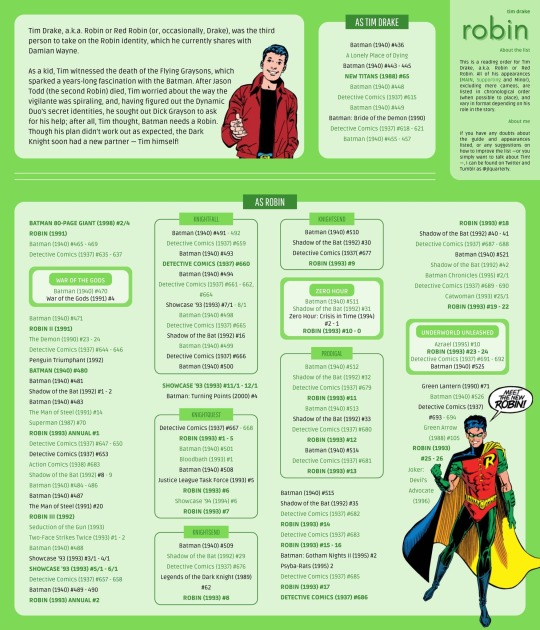



If you enjoy my reading guides or find them helpful and would like to support me, you can do so on my Ko-Fi.
#tim drake#robin#red robin#dc comics#reading order#tim drake wayne#dc reading guide#reading list#comics#batfam#dc robin#batman comics#archival work
3K notes
·
View notes
Text
Do you know how to store data to last decades? Are you overwhelmed by the task of archiving the trans internet?
Introducing TFR’s first guest column, “Archiving Your Trans Microlibrary” by my lovely editor @iwritethingssometimes , a practical guide to the techie side of literary preservation.
#trans fiction#trans literature#transfem#booklr#literature#books#trans literature preservation project#literary preservation#archival#archival work#digital archiving
249 notes
·
View notes
Text
Post as though it could be on the internet forever. Archive as though it could get deleted tomorrow.
(I haven't found out who created this maxim, but in my experience it proves to be more realistic advice than either extreme. Some things become lost media, and some things become impossible to erase everywhere. Be careful.)
#archive#internet literacy#media literacy#lost media#archiving#archival work#internet#rated G#screen reader friendly#original post
67 notes
·
View notes
Text
#transcription#history#historical documents#national archives#historical preservation#archival work#this is actually a neat thing to do if you have the skills and inclination
70 notes
·
View notes
Text
Material culture of the modern archivist: various tools and trash that result from the processing of archival papers.

1) Label maker, 2) label backing, 3) coated paper clips, 4) rubber bands removed from documents, 5) metal fasteners removed from documents, 6) sticky notes used as temporary box labels, 7) scissors , 8) box label sticker backs, 9) X-Acto knife, 10) archival letter opener, 11) mechanical pencil, 12) staple remover
555 notes
·
View notes
Text
You guys want to hear something really fucking stupid?
Archival work on disability in national archives is incredibly difficult to do. Like motherfuckers you have absolutely no idea how hard it is to find a decent source there. And if you try to utilize the tagging system or set parameters on dates the whole archive has meltdown and freezes your computer for a solid five minutes. Like what the fuck? Archive of our own runs better than you and they're run entirely by volunteers.
All that to say, fucking pissed and needed to rant because stuff on disability can be found but not in the national archives, you're going to have to search up specific disability rights organizations and comb through their museums and archives which isn't half bad. Rant's over.
#green rambles for a minute#disabilities#disability research#university tales#archival work#rant post
9 notes
·
View notes
Text
Tomorrow, I bravely go forth to do battle with the microfilm scanners at my national library for the first time, and I'd just like to question why, when I had the course "archival use" at university, they did NOT teach us microfilm-wrangling as part of the mandatory curriculum.
Anyway, pray for me
9 notes
·
View notes
Note
Just saw your reblog of the Gladys Ditmars post. Thanks for adding so much great information! I work in the Library & Archives of the Bronx Zoo and we’re at the tail end of a huge film cataloging/digitization project. We have thousands of reels that have rarely been touched before now. A number of Raymond Ditmars films have survived and will be available to watch online when our project is finished. I thought you might like to know!
That's absolutely amazing!!! I am thrilled more libraries/archives are undertaking these huge digitization projects (and having done archival work in the past I know what a massive undertaking they are.) As a researcher, you guys are my heroes.
Thank you SO much for sharing this! I can't wait to see what treasures you uncover!
(link to the Gladys Ditmars post for those who haven't seen it)
#asks#@stringsofglass#archivist and librarians are my heroes#gladys ditmars#history#zoos#the bronx zoo#archival work
52 notes
·
View notes
Text
The tiktok Ban and what being on the FYP was like before we got shut down (and rebooted)--
None of us knew what the SCOTUS decision was going to be. There was this tension of "should I say goodbye?? Is this really it??"
We had the tiktok end credits song and the general feeling that we were losing something important.
A loss of community, a loss of information, a loss of rights. Everyone kept crying because we knew this valuable tool of connection was going to be taken down.
The FYP was filled with old 2020 anime trends, people remaking their most popular videos or nostalgic stuff. Lots of people who swapped to RedNote (xiaohongshu) talking about their cross cultural experiences.
Lots of videos using Porter's Goodbye To a World (since it's literally about an online world ending).
Bad Bunny's DtMF was everywhere, reminding people to take more photos and value the moments we have together.
We also had people doing face reveals, thank you's, revealing family secrets or stories they had never told anyone. And apparently people posting hole???????
When we finally got the ruling and knew we'd get shut down, the dread was imminent. We didn't even have until midnight-- the servers went down 10:30pm EST on January 18th 2025. Videos slowly cycled out of the fyp until it was blank.
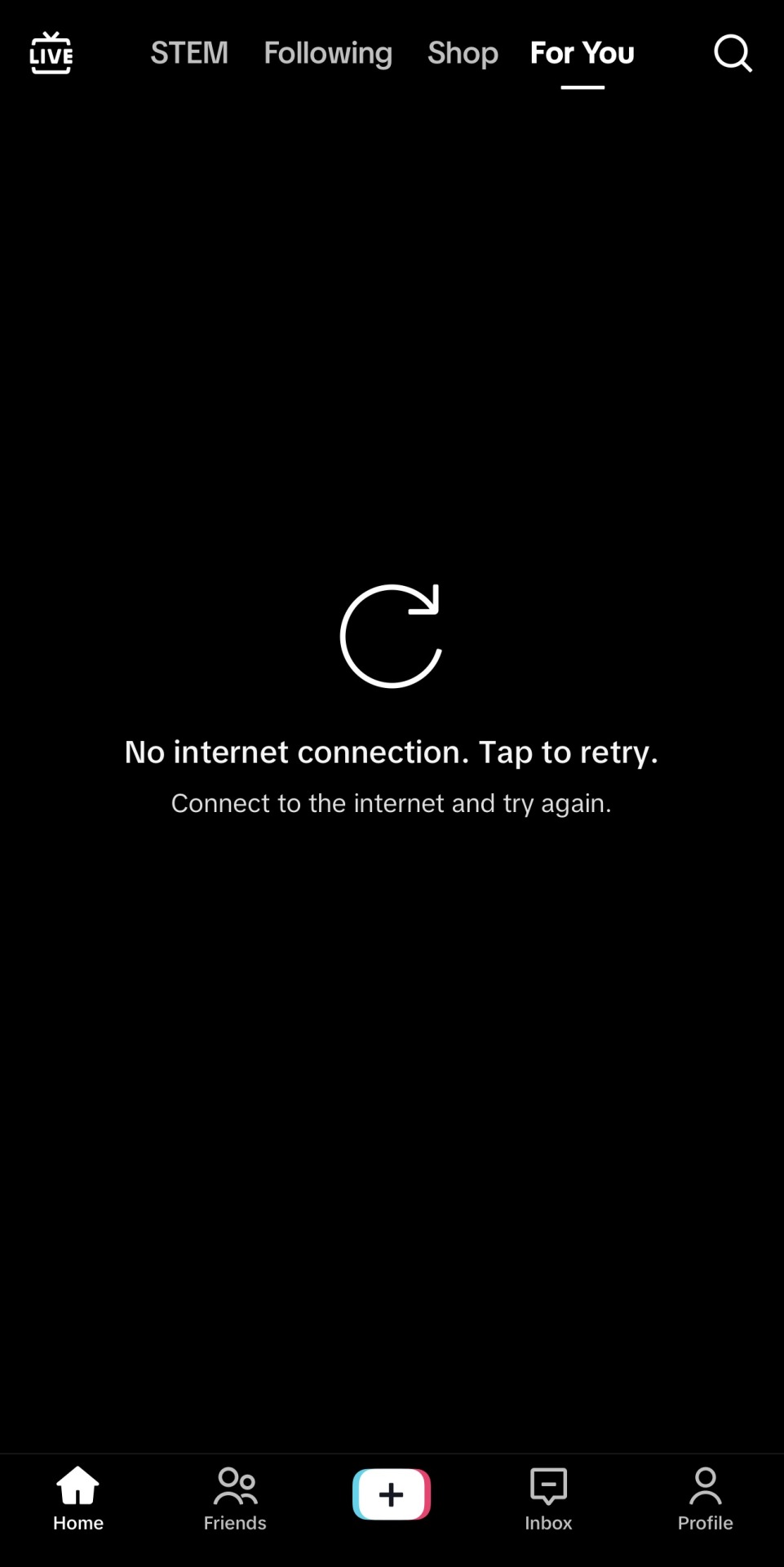
then, we got a popup message:
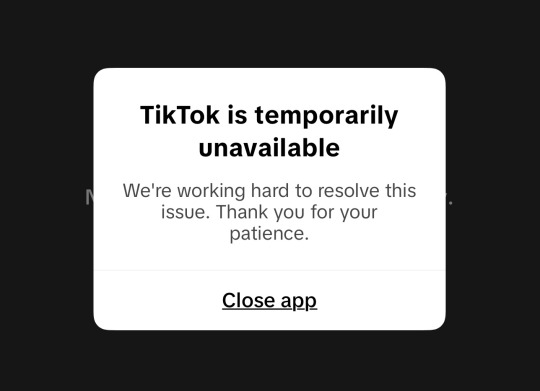
the message kept changing over the night, indicating this was all a political move of propaganda for the upcoming inauguration:

not even 12 hours later, we learned bytedance was ignoring the ban, accepting the penalty fees, and restoring the servers. Even though we were "banned" we suddenly were back online around 12:30/1:00pm EST Jan 19, 2025.
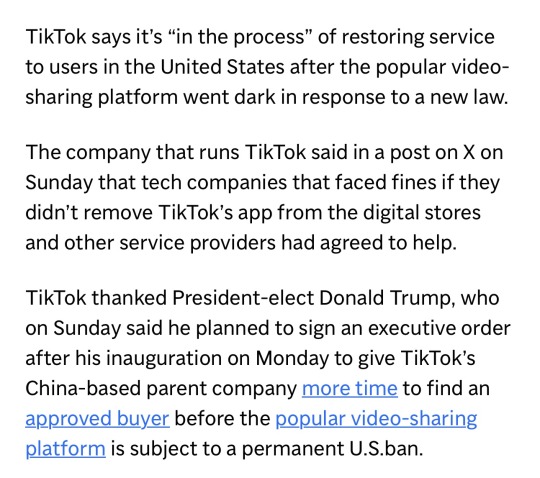


and then we got the final popup:
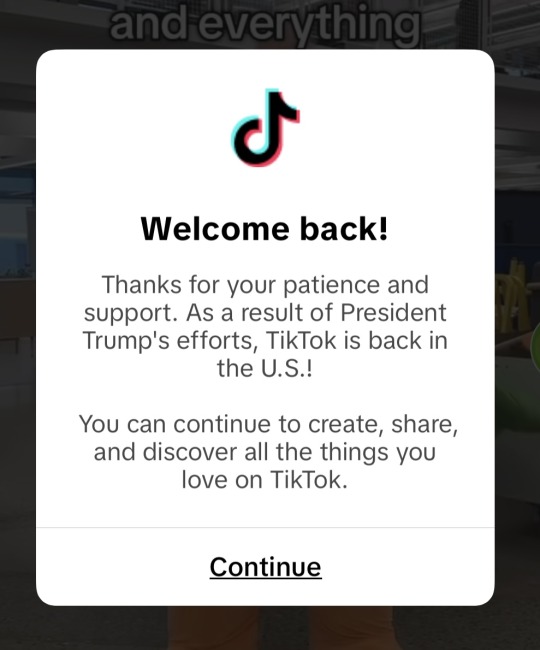
All the tears over losing a community and the goodbyes. All was just emotional manipulation for a propaganda stunt. Everyone had this foreboding sick feeling.
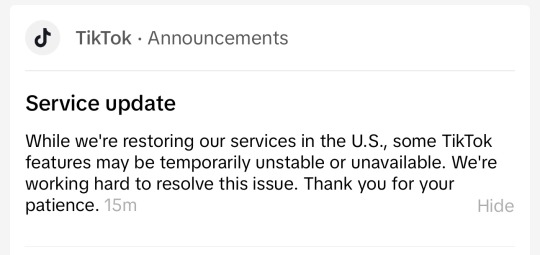
And suddenly everything was now being censored. In the time offline, new protocols had likely been introduced.
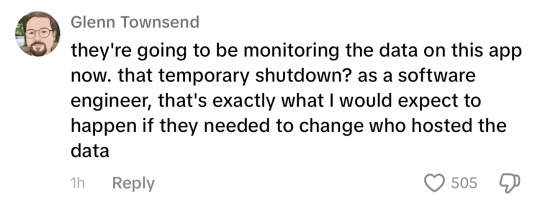
People were now told to "fact check" or getting posts put into review for 12 hours. suddenly fb and ig and meta were advertising and being pushed on the platform


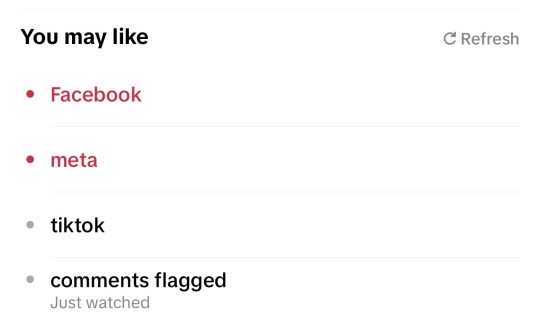
at that point, the app was dead to me, so I decided to delete--
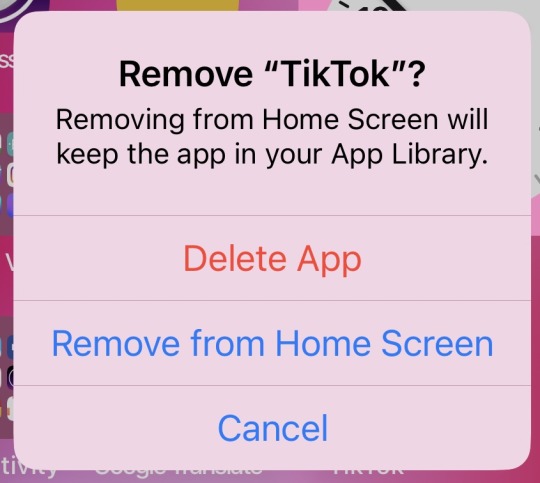
I can't get the app back atm because it's gone off the app store, so I'm focusing on archiving all the videos I was able to save :)
5 notes
·
View notes
Text
Idfk how sports blogs work but I watch the pro kabaddi league sometimes and I'm fucking annoyed about no content about kabaddi on tumblr [or anywhere really] so be the change you wanna see or whatever the fuck.
Adult male, 22. Can call me AK lol.
Tiermaker / YouTube
My tags:
# akmutters. -> Posts that - newsflash - aren't kabaddi.
# akposting. -> My posts on other platforms.
# kabaddi lb. -> What it says. Liveblogging.
# ifdafh. -> 'I Fell Down A Fucking Hole:' random research deep dive that I wasted my fucking time on.
Kabaddi tags:
# your kabaddi inventory. -> Misc. kabaddi / league PNG items.
# the kabaddi network. -> League ads / related videos.
# kabaddi radio. -> Songs / sounds from the league.
# kabaddi crash course. -> League rules / technical gameplay videos.
# kabaddi informed. -> Info about kabaddi / the league.
# the kabaddi paper. -> Interesting articles about kabaddi / the league.
# kabaddi khel. -> Games / activities about kabaddi / the league.
Other tags:
# Shoppable Link Alert. -> Link[s] are included in the post that direct to places to shop for the item[s] mentioned.
# continual updates. -> Posts which update when new info arises.
Images posted are not mine unless stated otherwise. I edit and otherwise polish visuals for better sharpness, but I do not own any media here unless said to. I merely look to archive the best versions of existing kabaddi media in the spirit of fandom.

" Pro Kabaddi League, also known as PKL, is an Indian professional Kabaddi league for men. It premiered in 2014 and airs on Star Sports. It is the most popular kabaddi league in the world and the third most watched sports league in India after the Indian Premier League and Indian Super League. " Wikipedia
[Yes I am aware there are other leagues - junior, women's, beach, asian/olympic games - no idc enough about them.]
More Kabaddi:
Websites
》 Pro Kabaddi League Official Site: https://www.prokabaddi.com
》 Khel Now - Kabaddi News: https://khelnow.com/kabaddi
》 Intl. Kabaddi Federation Official Site: https://www.kabaddiikf.com
YouTube
》 Pro Kabaddi YouTube Channel
》 Star Sports YouTube Channel
Teams:
Bengaluru Bulls, Bengal Warriorz, Dabang Delhi, Gujarat Giants, Haryana Steelers, Jaipur Pink Panthers, Patna Pirates, Puneri Paltan, Tamil Thalaivas, Telugu Titans, U Mumba, UP Yoddhas.
Current champions:
Haryana Steelers [S11]
[ Posts by Seasons: 1 / 2 / 3 / 4 / 5 / 6 / 7 / 8 / 9 / 10 / 11 ]
#sport#sports#sport news#kabaddi#pro kabaddi#pro kabaddi league#pkl#kabaddi world cup#le panga#desiblr#archival work#sportsblr#contact sports#bengaluru bulls#bengal warriorz#dabang delhi#gujarat giants#haryana steelers#jaipur pink panthers#patna pirates#puneri paltan#tamil thalaivas#telugu titans#u mumba#up yoddhas
4 notes
·
View notes
Note
do you have any tips for scanning old magazines/catalogs? i'd like to help archive some of the publications i have, but i don't really know where to start ʕ´•ᴥ•`ʔ
i'm mostly concerned about binding (especially on glbs) and what scanner specifications to look at, but any other advice or resources would be appreciated too!
So, I'm not actually an archivist, I'm a web developer by trade. I own a relatively inexpensive flatbed printer/scanner, mostly because it was what I could go out to a physical store and buy for relatively cheap when I started out scanning old magazines and catalogs.
For anything that is staple bound, like a magazine, and can be put flat on a table while open, scanning is relatively easy. You just need a flatbed scanner that is bigger than the pages, and a book to put on top of the lid to keep it flat (don't use too heavy of a book or you will damage the scanner 1-2 magazines is usually good. Also, don't forget they are there, open the lid and fling them across the room). Line up a corner of the page on the corner of the scanner and you should be golden. Scan in photo mode if your scanner software has options. Ideally, for things like the GLB, you would either want a copy you can destroy (which I kind of think is what some of the 'latest magazines' scanning farms were doing in the 2010s) and to carefully unbind the whole thing and scan the pages flat (which I have no personal interest in doing because destroying books pains me and I'm not trying to digitize "clean" digital copies for any professional reason). OR, my understanding is you want something with a V-shaped cradle of some type that is specialized for scanning books, either as an actual scanner or a camera setup with software. The problem is last time I looked those were like 10K and up if you get a piece of specialized equipment.
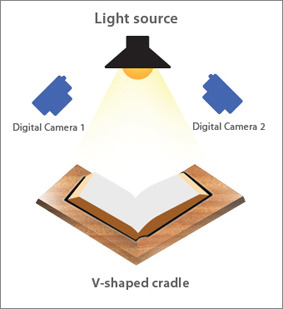
I've vaguely dabbled with the idea of doing a very hacky version of a DIY build with boxes cut down to the right angle and some panes of glass and my DSLR for my pink house catalogs because they are too big but I never really got it fully figured out. I will admit, I haven't tried super hard. I kept getting reflections, and I had to worry about the glass scratching the pages, and I didn't feel like getting a proper light.... I know I should really try again, and try a little harder, but it's a lot and I have a lot of other stuff I need to do so it just keeps getting kicked down the road.
That said, if you want to get into trying a DIY build, there is a whole community of people who were doing that in the 2010s that have posted good info on types of glass and way more detailed suggestions than I can make here: https://diybookscanner.org/forum/index.php This box scanner is essentially what I was trying to set up and it theoretically should work, I'm pretty sure my whole issue is that I was trying to do it all quickly at like midnight one day and did not have the right lighting and didn't try too hard to fix that. Like... I could have tried a lot harder than I did https://www.instructables.com/Bargain-Price-Book-Scanner-From-A-Cardboard-Box/ (good pictures of one here: https://diybookscanner.org/forum/viewtopic.php?f=14&t=1202)
And then I needed to take it apart because I needed the table back...
But yeah, if you don't want to invest thousands or destroy them, I would say try a cardboard box scanner for things like the GLB, see if you can get it to work for you?
And then for things that can go flat, a combo scanner/printer that is good enough for photographs will be more than good enough for the print resolution of most magazines and the scanner/printer combos are way cheaper than dedicated scanners because they think you are going to become an ink customer and buy printer ink, so they make it cheaper. But the joke is on them. My combo scanner printer has never had ink in it before. (Note: do read reviews and make sure it's not stupid enough to require it's ink to be full to scan. I wouldn't put it past some companies to add that to their software). If you are really passionate about this, there are a lot of people who are way more dedicated to archival book scanning who have developed all sorts of DIY solutions for speeding up the process, automating parts of it, etc, and searching for terms like DIY book scanner should get you in the right place on the internet.
7 notes
·
View notes
Text
KON-EL READING ORDER
For those who, like me, when they like a character they need to read every single comic the character appears in, I have compiled a list of all of Kon-El’s (Conner Kent’s) appearances from his debut up to the 2011 Flashpoint reboot (not including New 52 continuity).
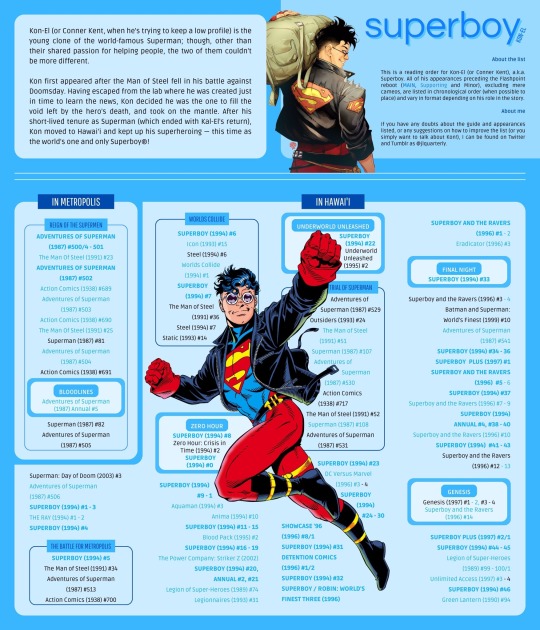
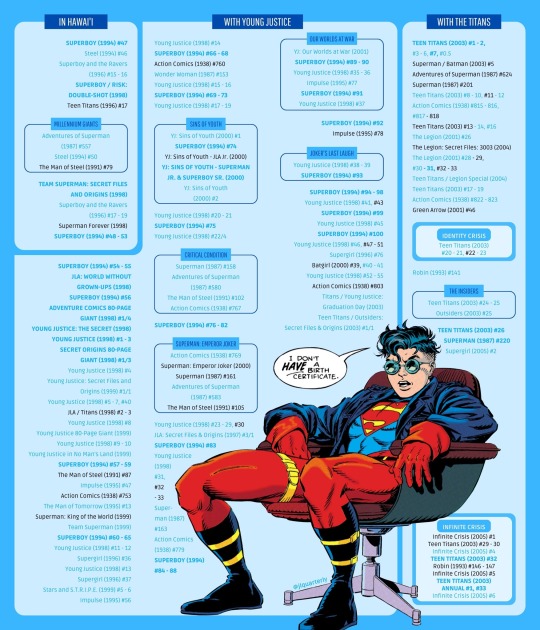
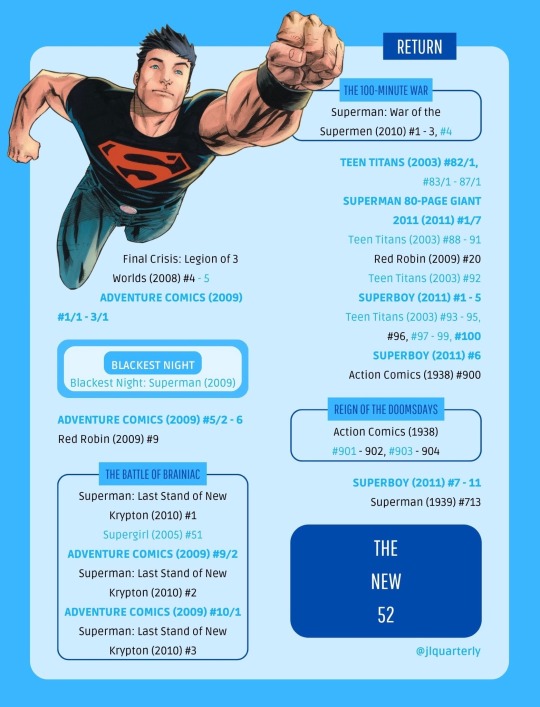
#dc comics#dc reading guide#reading order#archival work#kon-el#kon el superboy#conner kent#superboy#superfamily
2K notes
·
View notes
Text
i LOVE ARCHIVAL WORK
literally give me a pencil a notebook and 7 boxes filled to the brim with primary sources from something im researching and it will not emerge for like eight days
2 notes
·
View notes
Text
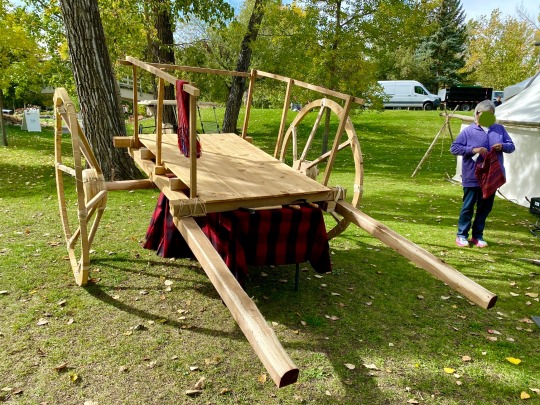
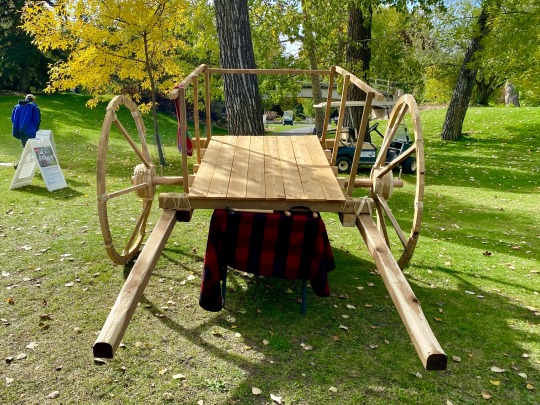
françoise (red river cart), 2023
My second red river cart built for the city of Calgary's parks educational programming about local Métis Otipemisiwak history. The cart is propped up for stability while it is not in use and because there was a last minute problem with a spoke that I will be repairing so that the cart will be able to function for years to come! It accomanies a Métis Otipemisiwak trappers tent and several large vinyl panels of archival material for education. I also delivered the following speech after Elder D. D. spoke some beautiful words and M. H. introduced me and fellow artist D. P. who created beaded and illustrated borders in the style of historic Michif beadwork for the selected archival images.
Taanishii kiiyawow? riel s. dishinikashoon. Hello, how are you all? my name is riel s. and i descend maternally from seven Métis Otipemisiwak families from the historic Red River Settlement and Batoche. Notably my Berthelet ancestors were community leaders in Pointe à Grouette, now Ste. Agathe, MB. Throughout this project I thought often of my 5th great uncle Jean Caron Sr. who fought in the North-West Resistance of 1885 in which his house was burnt down. It was later rebuilt in 1891 and it still stands in Batoche to this day. I introduce myself in this way, the traditional way of the Métis Otipemisiwak to contextualize my knowledge and experiences, situate myself on this land, and honour my family.
The red river cart is a symbol of Michif (Métis Otipemisiwak) ingenuity and survivance. From the land it rises and to the earth it will decompose again, not leaving a trace, not a nail or a screw. I built my first cart in 2022 during my undergrad as I considered histories of road allowance, trade, and Michif material culture's place in contemporary art. It is the vessel that carried us across our vast homelands and beyond, and cradled our young nation, serving us in our fight for sovereignty, dignity, and respect.
I would like to thank my friend C. for their assistance in parts of the building process, as well as their trust, friendship, and curiosity. I would also like to thank M. H. and D. P. for this opportunity and your guidance as mentors and your friendship. Maarsii.
#Métis/Otipemisiwak/Michif all refer to the same people lol#srry it's confusing#Metis Otipemisiwak is the legal name#michif is another name and the name of our language#my work#artwork#archive#archival work#historical interpretation#Métis#michif#history#alberta history#indigenous#fnmi#indigenous history#first nations#canada#canadian history#canadian art#contemporary art#traditional art#woodworking#western#western art#fur trade#my writing#poetry#artist#art
47 notes
·
View notes
Text
I never have much luck with promoting on here, but it’s worth a shot.
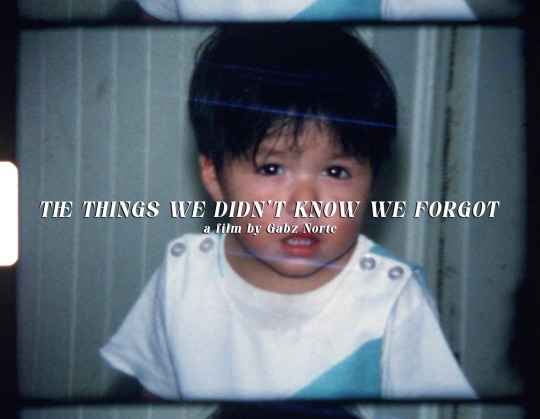
Míyaxwe, my name is Gabz Norte and I’m a Cahuilla and Cupeño filmmaker and av archivist. I’m making a film combining my family’s Super 8 home movies from the 1970s with footage I will also be shooting on Super 8 film. This is a hybrid project for me, creating a film and also preserving and caring for my family’s films while creating an archive. Many of these films are records of reservation life and Indigenous familial experience and I strongly believe they need to be seen.
As you may imagine, this is a costly endeavor and I’m trying to raise money to make this goal happen. I talk a little more about the details in the video in the link.
Shares are greatly appreciated. Á•čama!
#filmmaking#home movies#super 8#super 8 film#amateur film#short film#archives#archival work#av archivist#archivist#filmmaker#experimental film#indigenous#indigenous cinema
69 notes
·
View notes